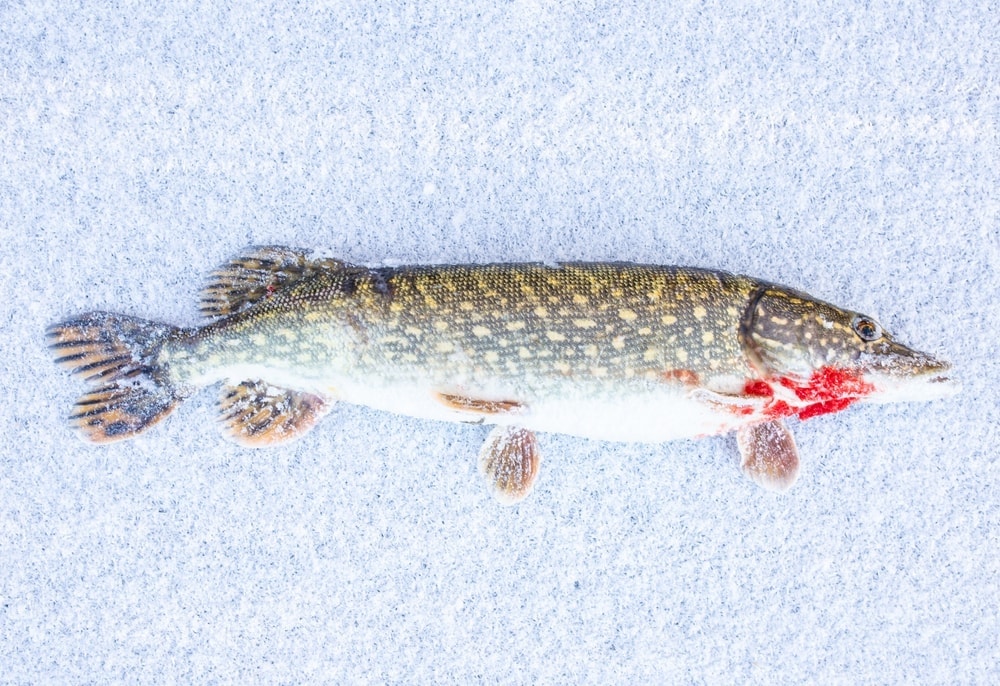Many people in the world have wondered if fish have blood. It may be a strange question to ask, but when people purchase fish from the grocery store, they usually do not see any blood on or inside the fish.
When red meat is cooked, blood escapes from within the meat as it shrinks due to the heat. But this does not occur when a person cooks fish.
So why don’t we see blood in packages of fish or from fish in the seafood departments?
Do Fish Have Blood & What Type?
Yes, fish have blood and it is the same red as humans have because it contains hemoglobin, which is an iron compound carrying oxygen. But the type of blood is totally different and like humans, they have different varieties of blood depending on the kind of fish.
We do not see fish blood in our food because they are drained before they are packaged and shipped. The average amount of blood in a fish’s body is about 10% of its weight.
If a customer purchases fish from the freezer, then the method of gutting, cleaning, and preparing them for consumer consumption will have removed all of the blood from a fish. When a consumer takes a fillet out of the freezer and leaves it to thaw on the counter, blood does not come out. The meat of the fish does expel a liquid, but that liquid is water.
If a customer purchases fresh fish from the grocery store’s seafood department, they are more likely to see fish blood but not by much. When a seafood department receives an order of fish, they are usually already gutted and drained of their blood. However, if a seafood department gets a shipment of live fish, the workers must drain the blood themselves.

How to Drain Blood from a Fish
The average fisher knows how to drain blood from a fish. They do this so that people who buy their fish do not have to eat the blood, and the fish meat stays fresh for longer. Plus, fish blood is acidic, and it will ruin the fish meat if it is left to coagulate inside their bodies.
Draining the black from a fish is quite easy, but it is messy. There must be a bucket or drain for the blood to flow inside. It must not be performed by any machinery or anything that expensive and can be stained. Fishers and commercial fishermen have specific places where they drain blood.
To drain the blood from a fish, it must be done right after they are caught. Like human blood, fish blood coagulates. So if a fisher waits too long, it will not be able to drain their blood.
To bleed a fish, the fisher must take a strong knife and cut directly underneath their gills. There is an artery that runs underneath their stomach and between their gills. You’ll know if you hit the artery if a gush of blood comes out, and the blood continues to drain. If there is very little blood, then you did not cut the correct area.
Once the blood begins to drain, place the fish within a container that has ice. Lay the fish on top of the ice and wait until the blood is completely drained.
Is All Fish Blood Red?
Although the vast majority of fish in the world have red blood, there are a few species of fish with colorless blood. One fish that does not have red blood cells is the Antarctic icefish. This species of fish lives in the Antarctic, as well as certain parts of the Southern Ocean. It is the only living vertebrate that does not have hemoglobin in their circulatory systems.
Scientists have found that their blood is colorless because of a genetic mutation. This mutation changed their blood, so it does not contain any red blood cells.
But if this fish does not have red blood cells in their circulatory system, how can they transport oxygen through their gills to breathe? Red blood cells carry oxygen from a fish’s gills into their circulatory system. The arctic ice fish can survive because they use only 10% of the oxygen that an average fish requires.
The habitat of the Antarctic icefish also helps them to survive by being oxygen-rich. The waters in the Antarctic have much more oxygen molecules than the rest of the oceans do. Therefore every time they take in water from their gills, they take in more oxygen than a regular fish.

How Much Blood Does a Fish Have?
The amount of blood that a fish has in their circulatory systems depends on the size of the fish. On average, the amount of blood in their bodies is around 10% of their total weight. Of course, this percentage changes depending on the species of fish.
Do Fish Bleed when They Are Stabbed or Wounded?
Yes, when a fish is injured or receives a wound from a predator or their environment, the veins in their body become damaged, and their blood will leak into the water. We do not notice their blood leaking out of their veins because the water usually dissipates the blood before we have a chance to see it. Also, the amount of blood that they have in their body depends on their size. The smaller a fish is, the less blood they will have, which makes their wounds and their blood harder to notice.
So, if a large fish like a full-grown tuna or a swordfish is wounded, we’ll see the blood leaking out of their bodies.
Conclusion
- Fish do have blood in their bodies
- We do not see their blood because they are drained and gutted before they are filleted and shipped to the grocery stores
- Fish to bleed from their wounds but it can be hard to see if they are small
- The Antarctic ice fish is the only vertebrae that have colorless blood
- Their blood is colorless because they do not have any red blood cells in their circulatory system
- On average, a fish has 10% of their blood as their total body weight.
- If a seafood department in a grocery store receives live fish, they have to cut and drain the fish themselves.











